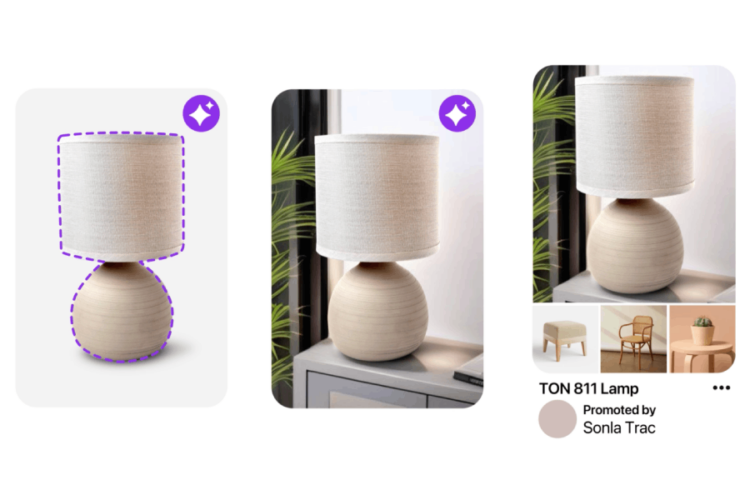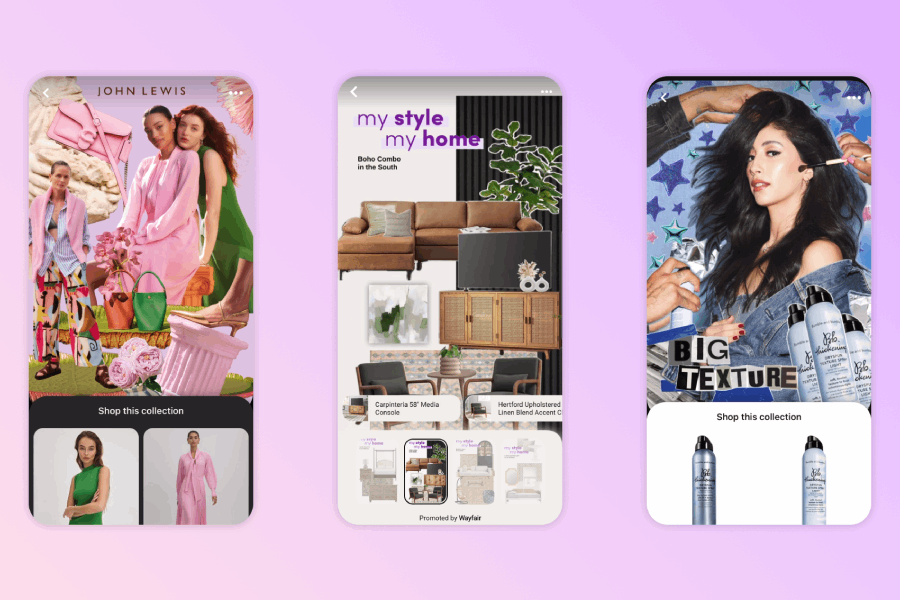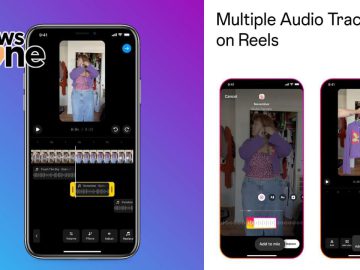Pinterest has launched Ad Labs, a program to test prototypes of new creative and ad tools including generative AI features powered by personalised insights.
To start, Pinterest is testing personalised background generation in the US, powered by a proprietary generative AI model that uses the company’s visual search and taste graph.
The tool will generate personalised lifestyle backgrounds to enrich Product Pins and deepen engagement. Using signals reflecting Pinterest users’ taste, the feature generates backgrounds personalised to their aesthetics with themes such as “Japandi,” “Organic Modern” or “Minimalism.” For instance, instead of seeing a chair on a white surface, users will see the same chair with a personalized background reflecting their aesthetics in home decor.
Pinterest has also launched Collages which are a new way to curate, share ideas and shop on Pinterest. Users can create collages by cutting out, remixing and reassembling almost anything visual. Collages are now in testing with advertisers including Nike, Bumble and John Lewis. The hope is that colleages will make engaging content more shoppable and discoverable through promotion. Select advertisers can tag the products in their collage and promote it as a Showcase or Collection ad so that users can tap to learn more about their brand and products.
Pinterest said that it had been working with furniture and home goods company Wayfair on collages with decor and furnishing, inspired by Pinterest trends, and then promoted them as shoppable Showcase ads. This new format proved to be 28 per cent more efficient cost per click (CPC) and drove 5.4x higher engagement compared to Retail Vertical benchmarks.
“Wayfair is always on the forefront of testing innovative ad formats. We saw the unique opportunity with collages to take customers from inspiration to action with a single ad creative that is visually engaging, performant, and creates a new way for our target customer to shop,” said Sandro Corsaro, Wayfair’s global head of creative and content.
Pinterest also said that it was using its Pinterest Performance+ suite (currently in closed beta) to bring together its latest AI and automation features to help increase performance, while making it easier and quicker for marketers to create campaigns.
 An example of a lamp advert using Pinterest’s Performance+ tools
An example of a lamp advert using Pinterest’s Performance+ tools
Early results from Pinterest’s alpha testing showed that most advertisers saw a 10 per cent improvement in cost per acquisition (CPA) for Conversion and Catalog sales campaigns or a 10 per cent improvement in CPC for Consideration campaigns. In addition, the suite of Performance+ tools decreases campaign creation time significantly with 50 per cent fewer inputs required.
Pinterest has also been working with Integral Ad Science (IAS) to provide Brand Safety Measurement across all monetised markets, aligned to the Global Alliance for Responsible Media (GARM) framework, as part of Total Media Quality for Pinterest. IAS’s AI-driven Multimedia Technology utilizes machine learning for frame-by-frame analysis, combining image, audio and text signals to accurately classify Pins at scale. Based on advertiser campaign results during beta testing, 99 per cent of measured ad impressions on Pinterest were measured as brand safe.
In the coming weeks, we’re also integrating with DoubleVerify (DV) to provide advertisers globally with brand safety and brand suitability measurement on their Pinterest campaigns. DV’s brand safety and suitability measurement enables visibility into advertising adjacency, safeguarding reputation and preserving brand equity. Based on initial testing, DV found that more than 99 per cent of measured impressions were deemed safe.




